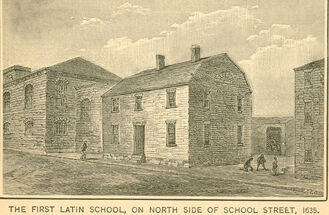Sosa: School districts know better
July 22, 2020
The first public school opened in 1635, and it still exists today. Over it’s almost four centuries of existence, public schools have evolved and changed over time. From just boys being educated to everyone getting a free public education, schools have continuously shifted and changed.
Today, federal, state and local governments try to align Americans’ learning in a semiconsistent way. While the state and federal government should dictate a lot of what goes on inside a school system, they should not decide in-person education must occur during a pandemic. If we are to err on any side of this pandemic when it comes to children’s lives, it should be on the safe and secure side.
Trump: Schools Must Open
President Donald Trump has said schools must open. He has even threatened to cut federal funding to schools if they don’t open for in-person instruction. Although there are some questions whether the president’s administration can follow through on this threat legally, the federal government funds about 10 percent of the funding for schools across the country. In Iowa, 54 percent of funding comes from the state, 39 percent from the local government and around 7 percent from the federal government.
Trump’s argument is that the Democrats want to keep schools closed to make him look bad and the Centers for Disease Control and Prevention (CDC) guidelines are just “very tough & expensive” along with “impractical.” The CDC recommends physical distancing (desks apart, a smaller number of children in the classroom and etc.) and mask wearing (if possible).
The president is correct when he says these things are “impractical” and “expensive.” After all, some of our school districts are underfunded; how are they supposed to ensure our children’s safety and security during the COVID-19 pandemic?
Iowa’s governor, Kim Reynolds, announced earlier this month schools must have at least half of their instruction in person. Schools may give parents the option to enroll in voluntary online programs. If a school wants to do only online, they need to get a waiver from the new policy. This was announced on the day Iowa’s daily record of positive cases for COVID-19 was 879.
Funding Problems
Michigan schools estimate an additional cost of opening their schools safely to be around $1 billion. The executive director of the Michigan Association of Superintendents and Administrators, Chris Wigent, says on average an additional $1.7 million may be needed per school district to open safely. Another study puts that figure at an average of $1.2 million, or $2,300 per student. There are 50.8 million students in our public school systems and 5.8 million in private schools. A group of 70 educational groups penned a letter to Congress asking for additional funding of $250 billion to fund the new expenses of COVID-19.
The only thing Congress agrees on is in providing less than what these groups are asking. The Senate Democrats offered a bill that would provide $175 billion to K-12 education; the Republican counterproposal supplies $70 billion. The House has already passed a bill that would give $90 billion in aid.
Children Aren’t At Risk
We don’t have definitive data on how COVID-19 affects children. From various studies and actual confirmed cases of coronavirus, the data we do have seems to be pointing toward the notion young kids don’t get that sick from the virus. Nevertheless, there is a link to multisystem inflammatory syndrome in children (MIS-C). MIS-C is a serious disease and can be deadly, but most children diagnosed with this disease do get better.
According to a South Korean study, children over the age of 10 can spread the disease at least as much as an adult can. This makes opening schools for in-person instruction a bit more challenging.
We need to remember children only make up a part of the school. Teachers and staff may be at higher risks to contract and spread COVID-19. Teachers and other school staff have families and lives outside the school.
Milwaukee County in Wisconsin is seeing an 84 percent increase in cases for children aged 10 to 19. There is no one clear place or event that is getting these kids infected. Still, there is an indicator that social gatherings are playing a role in the higher case number. If you have been to any school district in Iowa, you know how crowded they can be during lunchtime, after school ends or shuffling between classes.
Let Local Districts Decide
School is much more than an educational workhorse. Schools provide nutrition for millions of children, which is critical for the millions of food-insecure children. They provide emotional support as well as dealing with behavioral issues. Basic medical care is also provided. Many teachers give the only positive interaction for the child when it comes to adults. There are sports and after-school activities that can make a massive difference in a child’s life, but these may not be available. Schools serve as educational babysitters so parents can go to work with a peace of mind.
It is for that peace of mind local school districts should dictate when to open in-person instruction for their students without the state and federal government telling them what to do. Should schools have mandatory in-person teaching? No, I don’t think so. In an interview with NPR, Michael Hinojosa, superintendent of the Dallas Independent School District, said something that really stuck with me. He said, “Sometimes parents forgive us if we commit educational malpractice. They will never forgive us if we let something happen to their children.”

















